Land-Grabbing, Tribal Conflict, and Settler-Nomad Disputes: Land Rights in Mine Action
Nicholas Ross [ Social Policy Group ]
CISR Journal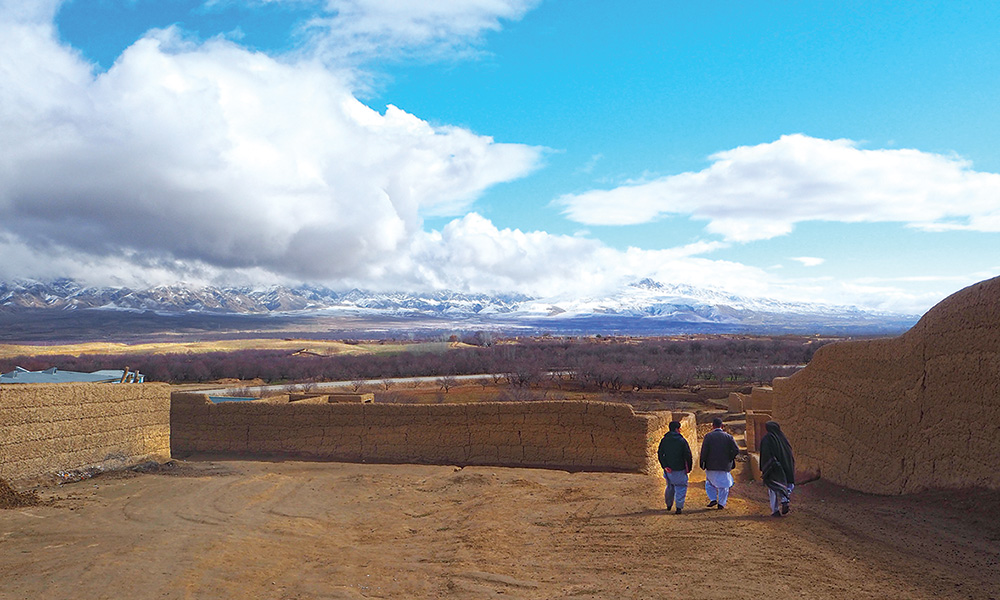
This article is brought to you by the Center for International Stabilization and Recovery (CISR) from issue 27.2 of The Journal of Conventional Weapons Destruction available on the JMU Scholarly Commons and Issuu.com
Mine action is intrinsically linked to land rights. While mine action creates multi-dimensional positive humanitarian and development impacts, clearance of explosive ordnance (EO) and land release can lead to competition, contestation, and potential conflict over that land. Settled farmers lay claim and block access to lands which nomadic pastoralists traverse or use for grazing. Local strongmen grab and confiscate land. Families returning from displacement find their ancestral lands seized. And governments and citizens may have very different ideas about who should own lands close to communities which, following EO clearance, are now more productive, where resources are more accessible, and with land that has increased value. This is especially the case where land ownership systems, including documentation and enforcement, are not fully transparent. Since mine action often takes place in conflict or post-conflict areas, these factors are heightened further, with a breakdown in clear and just land rights and tenure.
The major objective of this article is to help mine action stakeholders identify different land dispute risks and outline key strategies to mitigate those risks. Key strategies include 1) broad and inclusive consultation; 2) centering the principle of do no harm;1 3) employing the lens of conflict sensitivity; 4) linking with the Housing, Land, and Property (HLP) space;2 and 5) exploring the opposing effect of how mine action can help alleviate social tensions through land release. Recognition and mitigation of mine action related land disputes will help curtail negative consequences of clearance while increasing positive impacts as the sector works towards a mine-free world.
Land Rights and Mine Action in the 2021 Evaluation of the Mine Action Programme of Afghanistan
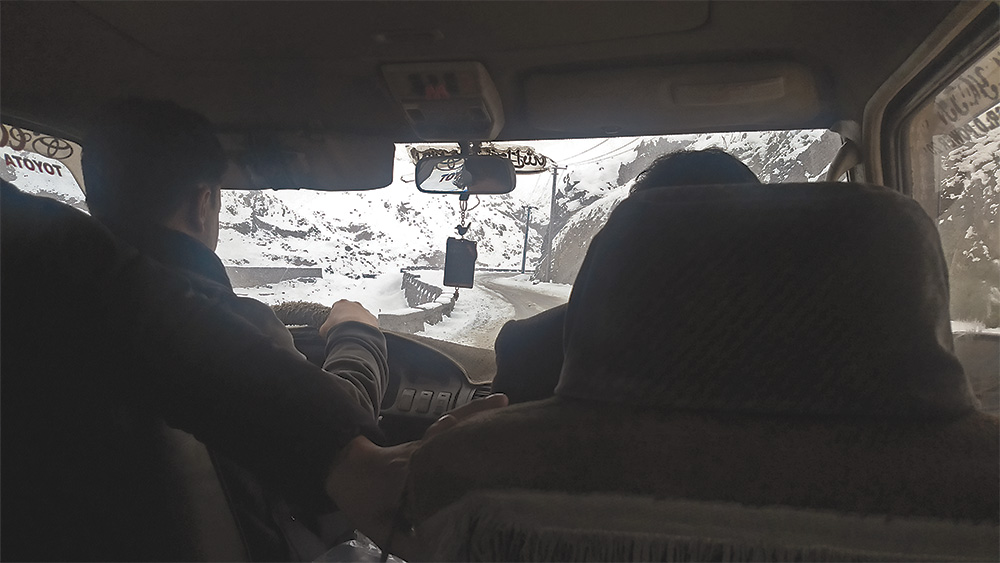
On the road to conduct community interviews on mine action for a HALO Trust Afghanistan evaluation, Kabul Province. Courtesy of Nicholas Ross/Samuel Hall.
Disputes over cleared lands were documented during the 2021 Samuel Hall and United Nations Mine Action Service (UNMAS) Evaluation of the Mine Action Program of Afghanistan (MAPA).3 The evaluation found wide-ranging positive impacts across multiple areas, through mixed methods research, as well as the novel use of geographic information system (GIS) methods to assess the impact of EO clearance on road networks and time-to-markets for rural communities across the country.
Alongside these impacts, the study also assessed reported issues in mine action from the perspective of communities. This stock-taking helped inform improvements to mine action operations in Afghanistan and beyond. This included an exploration of how to better extend the economic benefits of landmine clearance to community members who do not own land. It also examined ways to inform women when mine action operations were completed, and address safety fears women continued to have for their family members regarding harm from EO if they were not fully aware of EO clearance. In this assessment of issues, the research also briefly examined reports of land disputes after EO clearance, which formed a small part of the whole evaluation. Only four communities out of twenty-four (across eight Afghan provinces) in the study had meaningful numbers of research participants report land disputes occurring after mine action. But due to their significance as an opportunity for learning for mine action stakeholders in Afghanistan and globally, land rights issues were drawn on as a foundation for this article. And while the evaluation was conducted before the Taliban takeover in 2021, the examples of land disputes are pertinent to conflict- and post-conflict mine action operations globally, from the mountainous jungles of Colombia to South Sudanese marshlands, urban areas in Iraq, and farmland in Laos.
The topic of mine action and land rights has featured in several mine action studies, guides, and research projects. In 2010, the Geneva International Centre for Humanitarian Demining (GICHD) initiated a project on land rights and mine action in conflict-affected contexts. One of the outcomes was an article published in a 2011 edition of this Journal. Unruh, Chaizy, and Naidoo outlined how mine action organizations come into direct contact with land-rights issues through priority-setting, survey, and clearance. The Journal article also explored how mine action organizations can better address land issues given how critical an issue it is for humanitarian response, peace-building, and economic development.4
Other research from related studies includes a GICHD policy brief in 20105 noting that mine action organizations are never neutral when it comes to land rights, with land release inevitably involving land rights issues. The GICHD and UN-HABITAT published a report on land rights and mine action in Afghanistan in 2012, with analysis of land-related conflict alongside practical guidance on how mine action operations can take into account land issues and do no harm.6 In the same area of research, GICHD released a report for frequently asked questions in land rights and mine action in 2012, with topics spanning why land matters for mine action, land rights and land release, what mine action organizations can do, and where organizations can obtain additional information and support.7
A 2014 GICHD report, "Doing no harm? Mine action and land issues in Cambodia," develops a series of recommendations on good practice and systems-strengthening, which include improving coordination between mine action and land actors (discussed in this article as links to the HLP space); provision of land rights training; enhancing post-clearance monitoring and evaluation; and improving funding flexibilities.
Finally, the GICHD 2014 “Guide to Mine Action” contains specific sections related to land rights and mine action.9 Chapter 9 on Mine Action, Security and Development outlines how “land and access to other natural resources are common drivers of conflict” and how land release can have unintentional negative consequences. Additionally, the guide outlines mitigation measures under the humanitarian principle of do no harm, with practical remedies to address obstacles at different stages of mine action.
Identifying Land Disputes Linked to Mine Action: A Typology of Land Rights Issues Related to Mine Action
“We were satisfied with the mine clearance. There was a dispute over land between us and another tribal elder... [The other tribe] constructed a township on this land, while we have a land certificate from Ghazi Amanullah Khan’s era [1919 – 1929] and have submitted pastureland tax to the government.”10
~ Focus group discussion participant, 2021 MAPA Evaluation
Land disputes and contestation over natural resources linked to that land, such as water or minerals, are a major factor in intracommunal and intercommunal conflict globally. In Afghanistan for instance, land disputes have been recognized as a “primary driver of conflict” in the country.11 Because clearance of EO changes the status and value of the land, mine action can potentially create new disputes, or can accentuate preexisting disagreements.
Land rights issues are particularly pronounced in conflict and post-conflict contexts—another factor linking land rights to mine action—with much EO clearance and land release occurring in these settings. Areas with current or recent experiences of conflict often lack law and order, allowing disputes to escalate, as well as the proliferation of corrupt or criminal activities, including land-grabbing and confiscation. The lack of law and order also means that the enforcement of land title deeds can be difficult. The land title deeds system itself often lacks transparency, not being fully established and lacking effective administration. Legal systems are often in flux, with informal legal systems, competing legal systems, and changes in legal systems based on the larger conflict. A MAPA official noted land deed issues in the 2021 Evaluation:
“We ran into all kinds of issues around the deeds, it is very complicated. We already started looking into what land we are clearing, whether it is public or private. But that is an oversimplification of land usage in Afghanistan. Government-owned land is often seen as community land and used in a communal way. But not always.”12
~UNMAS Afghanistan, key informant, 2020
There are numerous types of land rights issues and types of land disputes. The typology is not exhaustive. Nor are the types mutually exclusive. Participants in one community in the 2021 MAPA evaluation reported tribal clashes over cleared land; disputes between the government and kuchi nomadic groups;13 and attempts at land confiscation, all within one community. Even within an issue type, there is much diversity, a confluence of changing social and historical factors, different drivers, and divergent actions and repercussions. The variation suggests that land disputes can be highly localized and dependent on social dynamics related to specific communities.
|
Type |
Categories | Identification Hypotheticals |
|
Intracommunal |
Between individuals or families |
A farming area adjacent to two family compounds has been unusable for thirty years due to EO. Both claim ownership. |
|
Marginalizing women from land rights |
Not including women in land release handover, ownership, and access further compounds patriarchal power structures and entrenches lack of rights and land access for women. |
|
|
Land-grabbing or appropriation within the community (i.e., by powerful people or groups, such as community leaders) |
The local strongperson and self-proclaimed community leader seize released land for themself and their family. |
|
|
Migration: Families returning home |
People are able to return to their village because of mine action, after living in displacement for decades. Their historical homes have been claimed by those who remained behind. |
|
|
Migration: Arriving migrants and people who considered themselves historic owners of the land |
There is high migration to a safe and economically growing area being cleared of landmines. The historic owners of the land are upset at the influx of settlers who are accessing and looking to buy cleared lands. |
|
|
Intercommunal |
Settler-nomad conflicts |
Recently cleared lands are being used by farmers for crops, but seasonally nomadic pastoral groups claim the land has been their pastureland for generations. |
|
Disputes between different social groups tribes, ethnicities, communities |
Two tribes have long-running disputes over land custodianship and access to resources on that land, including forest products and mining claims. Clearance is taking place in lands without clear demarcations. |
|
|
Government and people |
The government claim recently cleared areas are public land. The local community say they have had traditional ownership over that land and have a fractious relationship with the central authorities in the capital. |
A Deeper Look at Nomad-Settler Conflict
Each type and category can be extended for better understanding of specific land rights and dispute dynamics. For example, mine action and land release can lead to disputes between nomadic groups and settled populations. Nomadic groups, often pastoralists, such as kuchi nomads in Afghanistan, are at risk of marginalization from rights to land after clearance and release. Nomadic rights to land are often not solely related to ownership rights, but also to important right of way and easement rights.14 While referring to urban expansion, Giustozzi notes that increases in land prices creates incentives for grabbing pastures, with nomadic populations and settled communities competing with each other and among themselves to appropriate pastures, leading to conflict.15 EO clearance often results in land value and price increases in a similar vein to urban expansion.16 Since nomadic groups are usually not permanently located at sites, they may be missed during mine action communication, including in prioritization, survey, community liaison, handover, and post-handover activities. Nomad-settler conflict illustrates how mine action stakeholders can consult different groups to a) discover potential disputes and conflict related to mine action and b) understand potential conflict from different perspectives.
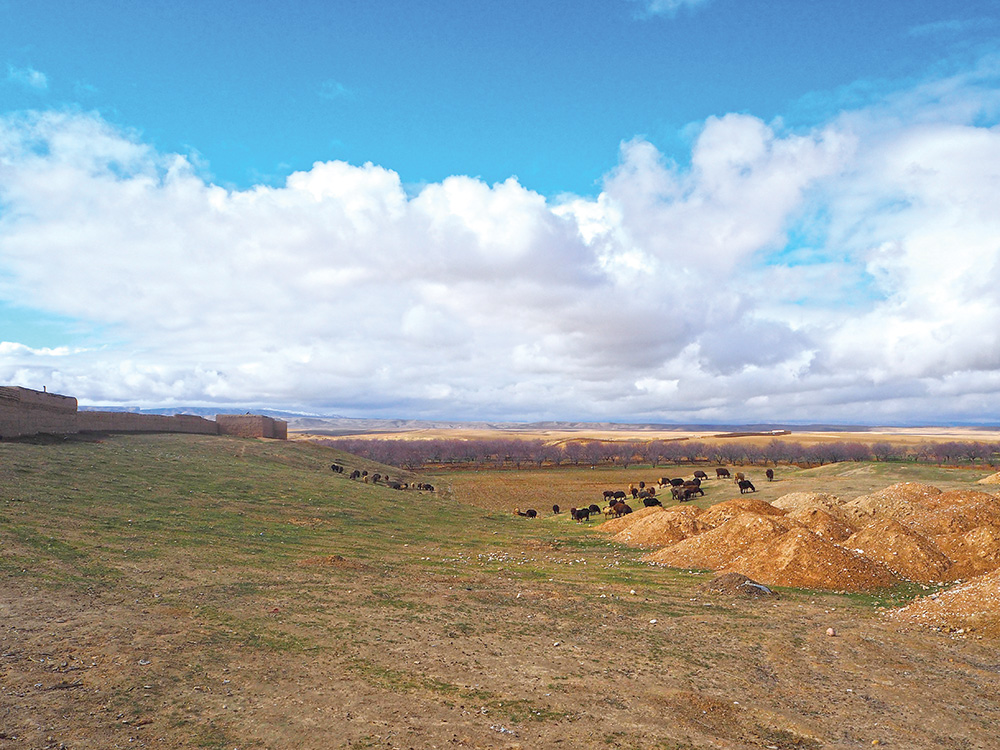
Grazing land cleared of EO in Samangan Province, northern Afghanistan. Courtesy of Nicholas Ross/Samuel Hall.
Principles, Approaches, and Strategies to Mitigate Land Disputes: Demonstrated Benefits of Inclusive and Wide Consultations
Nomad-settler conflict, as well as other types of land right issues such as land-grabbing, demonstrate that there is little use in only consulting with community leaders or a select group of potential mine action beneficiaries. Narrow communications and consultation could mean that potential conflicts remain hidden, with land disputes associated with mine action linked to dynamics of power and social hierarchy.
Significantly, in the 2021 MAPA evaluation, there was not one example where 100 percent of a community sample reported mine action-related land disputes (out of twenty-four communities surveyed, four of which had noteworthy numbers of people reporting land disputes). This indicates that there was a diversity of understanding and opinions. Even in the community with the highest proportion of respondents stating there was conflict, 40.48 percent of those surveyed in that same community responded that there was no conflict. Three other communities had citizens reporting land disputes: One community (23.91 percent) reported land disputes resulting from mine action, another 19.05 percent, and another 11.28 percent. All seventeen other communities had under 10 percent reporting land disputes.17
The heterogeneity of community members reporting land disputes in both quantitative and qualitative research in the MAPA evaluation illustrates the need for inclusive consultations with different groups of people. Mine action organizations should gather information from and consult with a diversity of sources, not just community leaders or officials. This includes with women, different tribes, nomadic groups (where relevant), and different households within communities, including poorer households.
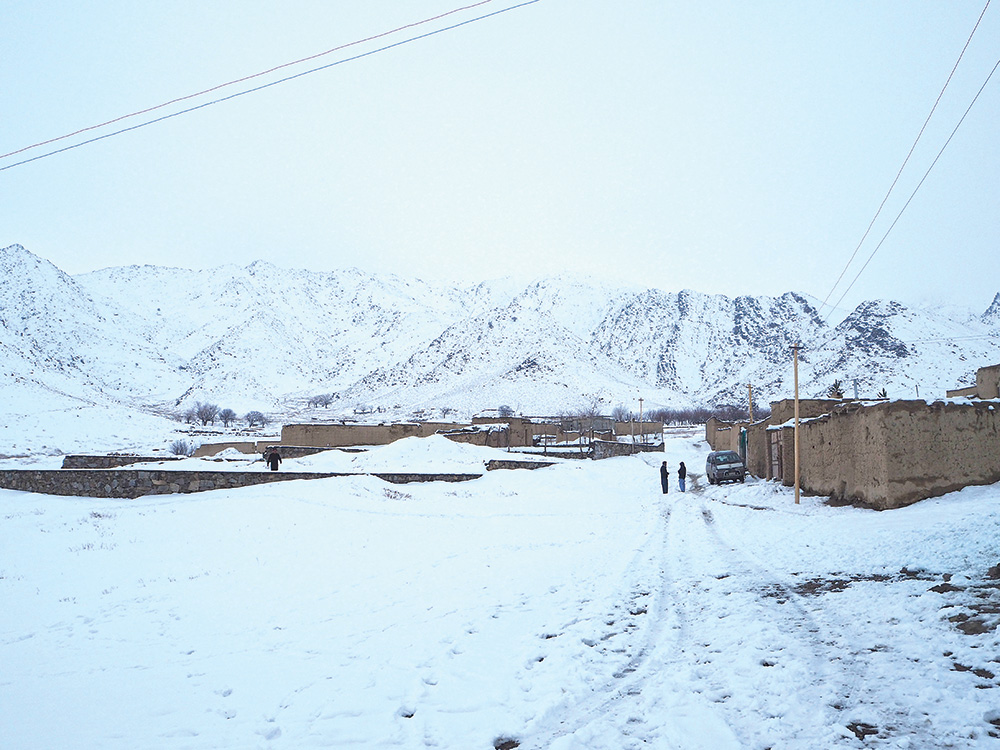
A village cleared of EO in a mountainous district in Kabul Province. Kuchi nomads regularly traverse through the district. Courtesy of Nicholas Ross/Samuel Hall.
Do No Harm
In addition to inclusive consultation, the principle of do no harm is a core strategy in helping the mine action sector navigate land rights and disputes. Do no harm means to prevent and mitigate any negative impacts of mine action. It entails examining the broader context of humanitarian mine action and constant work towards avoiding potential negative effects.
MAPA holds a do no harm approach. Notably, MAPA does not conduct mine action if there are any known disputes over specific land. Unruh, Chaizy, and Naidoo held up MAPA as a positive example in their 2011 Journal article18 and the policy has continued to the present day, with MAPA officials describing policies on cessation of mine action until land disputes are resolved.19 The MAPA evaluation found that MAPA stakeholders made conscious efforts to document and mitigate negative externalities of its activities.
The do no harm principle forms the cornerstone of a series of strategies for the successful preclusion and mitigation of land disputes and conflict related to mine action.
”There are do-no-harm considerations. If there are community tensions, we do not clear… We leave and come back when the issue has been solved. That could take one month, or it could take a decade. The disputes can be tribal, or family feuds. I would not be surprised if we never found out about most disputes about demined lands.”20
– MAPA Key Informant, 2021 MAPA Evaluation
Implementing Conflict Sensitivity to Land Issues
Closely linked to do no harm is the conflict-sensitive approach. Conflict sensitivity is the practice of
- understanding how aid interacts with potential conflict in particular contexts,
- understanding these contexts including intergroup tensions and divisive issues, as well as
- how to mitigate potential issues and unintended negative effects.21
For the mine action sector, one of the divisive issues is land (alongside other potential issues including employment among particular groups and not others, lack of inclusive communication, unintended damage to property, and issues between employees and local citizens). Conflict-sensitive operations would mean that mine action centers and organizations maintain a robust understanding of different groups, their relations, and potential conflict-driving issues. This should occur across different levels, including international (clearance in contested borders), national (what clearance means for government and non-state armed actors), regional or provincial (various types of intercommunal conflict), all the way to the local level where clearance is to take place (various types of intracommunal conflict). At all levels, conflict sensitivity should appraise hidden power structures and complex local dynamics.
Developing Partnerships Between Mine Action and Housing, Land and Property (HLP)
One way to support conflict-sensitive approaches and local understandings is to leverage conflict-expertise in humanitarian contexts through partnerships between mine action and HLP. HLP is an area of humanitarian practice related to immovable property in emergency response. There are often dedicated United Nations HLP sub-clusters comprised of organizations dedicated to HLP in the many contexts where mine action occurs. HLP practitioners can often provide specialized understanding and support on land tenure, rights, access ownerships, documentation, and dispute resolution. One example is the Iraq Protection Cluster which issued a Guidance Note on Mine Action and HLP in 2019.22 The Guidance Note includes recommendations that mine action organizations should link into and inform the HLP sub-cluster and key HLP partners; that mine action organizations should ensure compliance in HLP Due Diligence; and that mine action organizations should refer to relevant standards, strategies, and guidance regarding mine action activities and cross-cutting HLP issues. The Guidance Note also includes an HLP Due Diligence Process Map.
Harnessing the Positive Impact of Mine Action on Land Rights
Mine action can also reduce tensions over land, in contrast to the exacerbation of land disputes discussed thus far. Since EO clearance can release and make available productive lands, social conflict over scarce land and resources can be reduced. The MAPA evaluation found that “the presence of explosive ordnance had been eroding the social fabric and sparked tensions. Mine clearance attenuated tensions between different groups, including settled farming communities and kuchi nomadic pastoralists.”23 In a global Samuel Hall evaluation for The HALO Trust in 2021, mine action was understood by community members to preclude former pretexts for disputes and conflict.24 This included social blame over casualties and greater social cohesion resulting from development and employment opportunities. Realizing the benefits of mine action on land rights is still reliant on principled action, robust safeguarding, and other strategies to mitigate land disputes.
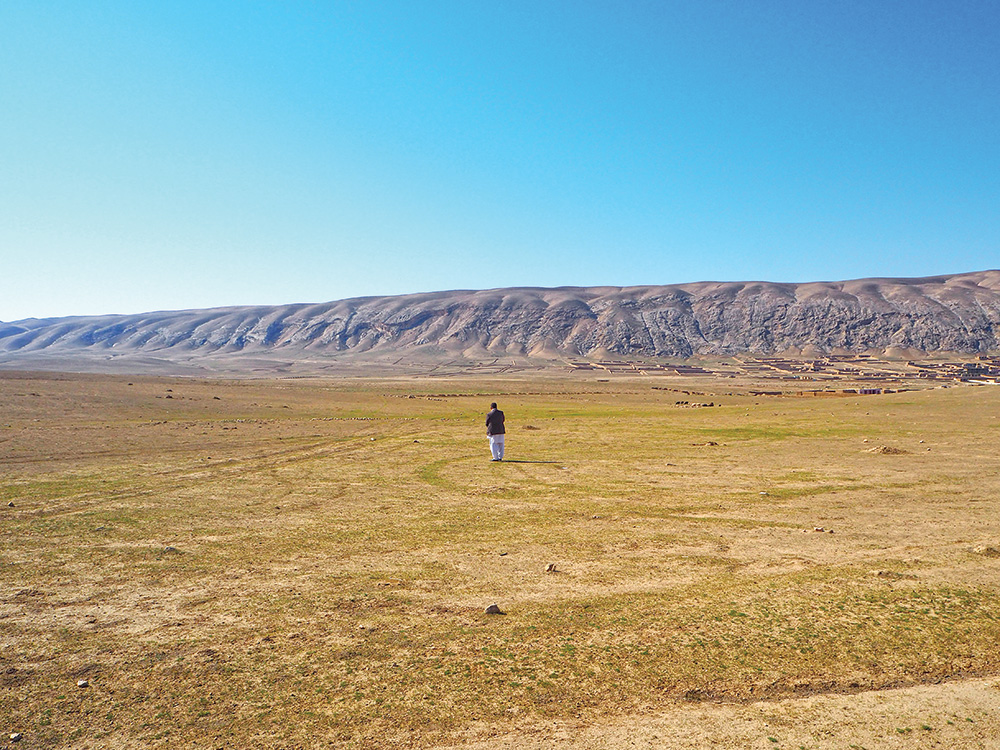
Land cleared of EO in Samangan Province, northern Afghanistan. Community leaders noted that the land was technically owned by the government, but the community could use it as free land for grazing. Courtesy of Nicholas Ross/Samuel Hall.
Conclusion
Mine action organizations do not conduct EO clearance and land release in a social vacuum. Cleared lands can lead to social friction, competition, and potential conflict.
There is wide diversity in how mine action land rights issues can occur. For example, a dispute over cleared land between nomadic pastoralists and a settled farming community will differ between Somaliland and Afghanistan. Even within Afghanistan, the same type of land rights issues will entail different dynamics and courses of action in different locations and at different times. Yet with mine action organizations' expertise and local knowledge, integrating an understanding of land rights may help mitigate land disputes across different contexts globally.
The intersection of mine action and land rights would benefit from further research. The typology of land rights issues outlined in this article could be extended and deepened with the experience and learning from mine action organizations globally. Furthermore, how these land rights issues occur in different contexts, with different local dynamics, would bolster this area of research further. A better understanding of how mine action attenuates tensions over land would also help stakeholders understand the different benefits of mine action. Finally, further work on the preventative strategies, such as inclusive consultation and conflict sensitivity, would sharpen the various tools mine action organizations can employ in their operations. Mine action and land rights are intrinsically linked and must continue to be understood as such, shaping mine action for the better.
Nicholas Ross
Samuel Hall Research Fellow – Samuel Hall
Policy and Project Officer - Social Policy Group
https://www.samuelhall.org; https://socialpolicy.org.au
nick.ross@socialpolicy.org.au
 Nicholas Ross (Nick) is a Samuel Hall Research Fellow (Samuel Hall) and works for the Social Policy Group (Migration Council Australia). Previously, he was a Research Manager with Samuel Hall, conducting humanitarian and development research with a focus on Afghanistan. Ross holds a Master of International Relations from the University of Melbourne.
Nicholas Ross (Nick) is a Samuel Hall Research Fellow (Samuel Hall) and works for the Social Policy Group (Migration Council Australia). Previously, he was a Research Manager with Samuel Hall, conducting humanitarian and development research with a focus on Afghanistan. Ross holds a Master of International Relations from the University of Melbourne.
| Stay updated | |||
